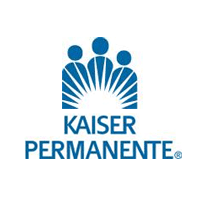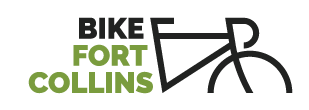active living grant
The Active Living Grant was the catalyst to Bike Fort Collins’ overall Active Living program, allowing it to leverage its passion for bicycling and its influence in an effort to improve active transportation, health, and a sense of community for the Poudre Valley Mobile Home Park in northern Fort Collins.
A FOCUS ON ACTIVE AND ALTERNATIVE TRANSPORTATION
In 2016, Bike Fort Collins committed to a multi-year grant program engaging the north Fort Collins community–specifically the Poudre Valley Mobile Home Park (PVMHP)–to increase the number of people walking, biking, and using alternative transportation. The Active Living Grant program, underwritten by Kaiser Permanente, focused on active and alternative transportation inequity in north Fort Collins, specifically within mobile home park communities, which are predominantly Hispanic/Latinx.

THE ACTIVE LIVING GRANT PROGRAM
Kaiser Permanente celebrated its 50th Anniversary in 2019 and this video overview of the Active Living Grant program, featuring former BFC interim executive director, Bruce Henderson and resident coalition champion, Edna Chavez was created as part of a broader video series.
Generally speaking, in north Fort Collins, mobile home parks tend to be predominantly Spanish speaking communities. According to an initial survey, conducted as part of the Active Living Program, 60% of residents in the PVMHP are monolingual/preferred Spanish speakers and 80% self-describe as Hispanic/Latino/Spanish origin. The Larimer County Department of Health and Environment Health Equity Index indicates that, residents in Fort Collins mobile home parks represent the most at-risk households (below area-median income, with no high school diploma or GED, a high percentage of older adults, persons with children, and/or persons with disabilities). The 2010 US Census Bureau reported that 18,726 people in Fort Collins identified as Hispanic/Latino; of which 21.5% of these individuals live in poverty, compared to just 15.5% of whites living in poverty.
GOAL: LIVING HEALTHIER AND ACTIVE LIVES
The goal of the Active Living Grant program was to work with community members in order to identify relevant activities and active modes of transportation, and develop long term programs in the neighborhood that increase access and opportunity to live healthier, more active lives.
A TWO-PHASED APPROACH
The program consisted of two phases:
- Phase 1 (2017 – 2018) – The focus of Phase 1 was to establish program goals, baseline metrics, form the youth and adult resident coalitions, as well as host Pathways to Health, a summit for professionals emphasizing the connections between health, the built environment, and active transportation
- Phase 2 (2019 – 2020) – The focus of Phase 2 was the execution of community engagement events and physical improvements to the built environment within and around the mobile home park, as well as hosting Pathways to Health 2.
A BLUEPRINT FOR COMMUNITY COLLABORATION
Over the course of the 3-years, the Active Living Grant program hosted and community members engaged in numerous areas, including:
- Leading and coordinating both, an adult and youth neighborhood coalition
- Hosting a Pathways to Health summit and speaker series focused on the connections between health, the built environment, and active transportation
- Planning and attending a North Fort Collins Community Event (to help celebrate the opening of the Hickory bike share station)
- Contributing to photovoice projects
- Providing feedback from experiential walking tours and asset mapping activities
- Partaking in a community health fair
- Engaging in a resident-led Pathways to Health session and follow up Pathways to Health workshops
- Participating in bike education days through a newly developed Latinx program
- Engaging in various youth activities, including participation in Open Streets Fort Collins
- Benefiting from mobile bike repair days and workshops
- Enjoying community ice cream socials
FIESTA DE MOVIMIENTO
In 2018 under the leadership of BFC and the Active Living Grant program, community organizations and members collectively hosted a festive community event in north Fort Collins in conjunction with celebrating the addition of the Hickory bike share station.
The Active Living Grant program was always about more than living a healthy lifestyle. It also focused on being more active in one’s community through advocacy and education. The project helped create change that the people want to see. The coalition groups made up of youth and adults guided the process, and set goals for the grant time period and beyond. The coalitions served (and still serve) as a representation of the greater population, and pull together resources from outside the park to achieve their goals.
The Active Living Grant program has become a blueprint for community advocacy work with populations directly affected by racial health disparities and clearly demonstrates the power of resident-led initiatives and collective community action. We found that community engagement and self-determination are key factors in creating lasting structural and policy changes. Another key success factor of the grant program was the partnerships that developed with local government, nonprofit organizations, and community groups, which set the stage for the continued collaborative work to improve health and wellbeing in Larimer County that BFC is still doing. These types of partnerships were integral to achieving the following:
- North College Ave sidewalks, bike lanes and bridge
- Installation of bilingual wayfinding signage
- Creation of a community kiosk and area walking and bike trail map
- Purchase and installation of a brand new playground within Poudre Valley Mobile Home Park
- Design of a re-imagined park (surrounding the playground at PVMHP) through a supplemental grant from Fort Collins’s Nature in the City (NIC)
- Installation and completion of the new, re-imagined park from the NIC grant
learn more about
SAFE ROUTES
TO SCHOOL
what’s the status of
BIKE SHARE?
what’s it take to be a

